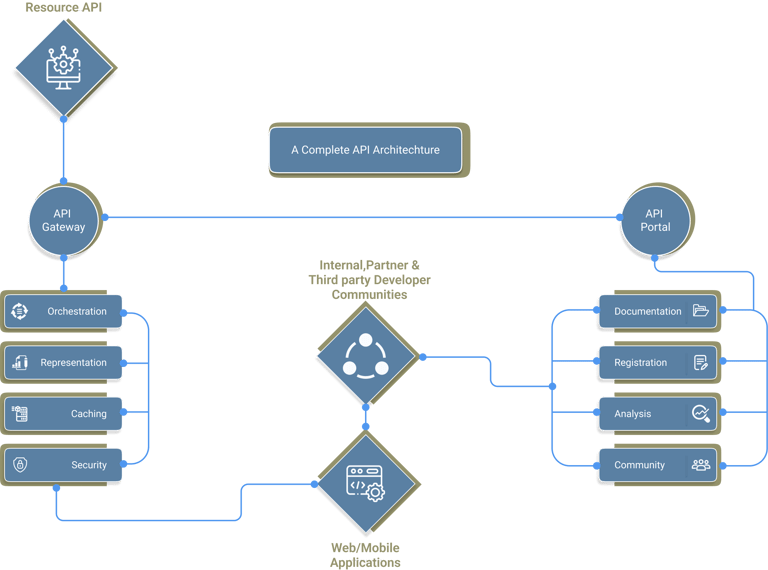What are Microservices?
Microservices are small independent services that communicate via well-defined APIs and are used in software development to represent an architectural and organizational approach. These services are owned by small, self-contained teams and are independently deployable, capable, and highly maintainable and testable. Microservices nicely complement cloud-based application architectures by allowing software development teams to take advantage of scenarios such as event-driven programming and autoscaling.
Why Do Enterprises Adopt Microservices?
Are you tired of slow response times and rigid IT infrastructures that can’t keep up with your business needs? Look no further than microservices architecture. By adopting a microservices architecture approach, enterprises can become more agile and resilient, and are able to respond quickly to the changing market demands. With extreme time to market, microservices architecture establishes a bridge between businesses and IT, providing the interoperability and flexibility necessary to keep your enterprise ahead of the curve.
What are the Benefits of using Microservices?
Several organizations have started reaping the benefits of microservices. According to a recent survey by TechRepublic, 69% are faster at deploying services, 61% are more flexible when responding to changing circumstances, and 56% are faster at scaling up new features. For enterprises big or small, the benefits of adopting microservices are many. Following are some key benefits:
Technology Agnostic
Scalability
Microservices architecture enables businesses to scale their services independently, allowing them to add new features or functionalities without changing the entire system.
Flexibility
With microservices, each service can be developed, deployed, and maintained independently. This makes it easier to update, modify or replace specific services without affecting the entire system.
Resilience
Unlike traditional systems, microservices don’t go down when one fails. There will be no single point of failure since the other services will continue to operate.
Improved Developer Productivity
Microservices architecture enables developers to work on specific services independently without having to worry about other services. This leads to increased productivity and faster development cycles.
How to Migrate Existing Applications to Microservices?
Step 1: Identifying the logical components of the existing application, flatten & refactor them as needed.
Step 2: Identifying the component dependencies and component groups. After that, an API should be created for remote user interface.
Step 3: Breaking down the monolithic application into smaller, independent services based on their functionalities. This process may involve refactoring, rewriting, or even building new services.
Step 4: Defining clear and well-defined interfaces for each microservice, including APIs and protocols for communication between the services.
Step 5: Containerizing each microservice using tools like Docker or Kubernetes, which enable every service to run independently and be deployed in a distributed environment.
Step 6: Deploying the microservices into a production environment and testing them thoroughly. It’s essential to ensure that the microservices work together seamlessly and that the application functions as expected.
Step 7: Monitoring the microservices to ensure they’re running optimally and making any necessary changes. Use tools like container orchestration platforms and service meshes to manage and orchestrate the microservices.
API Management Platforms

AWS API Gateway
REST, HTTP, and WebSocket APIs can be created, published, maintained, monitored, and secured with Amazon API Gateway. API developers can use AWS’s services and store data in the AWS Cloud through APIs.
IBM API Connect
A management solution for the entire API lifecycle. IBM API Connect® is a security-rich API management solution that uses an intuitive experience to help consistently create, manage, secure, socialize and monetize APIs, helping power digital transformation on premises and across clouds.
Apigee
Google’s Apigee API platform powers data-rich, mobile-driven APIs and applications for the digital economy. It provides features like API design, security, analytics, monetization, and developer portal.
Microservices Framework / Platform
Google Cloud Functions
Microsoft Azure Functions
AWS Lambda
It is a serverless, event-driven compute service that lets you run code for virtually any type of application or backend service without provisioning or managing servers. You can trigger Lambda from over 200 AWS services and software as a service (SaaS) applications, and only pay for what you use.
Containerized Microservices Management Tools
Docker Swarm
It is a container orchestration tool that enables enterprises to deploy and manage containerized applications across a cluster of hosts.
Kubernetes
It is an open-source container orchestration platform that can automate the deployment, scaling, and management of containerized applications.
Apache Mesos
It is a distributed systems kernel that can manage resources across clusters and enable enterprises to run containerized applications at scale.


















